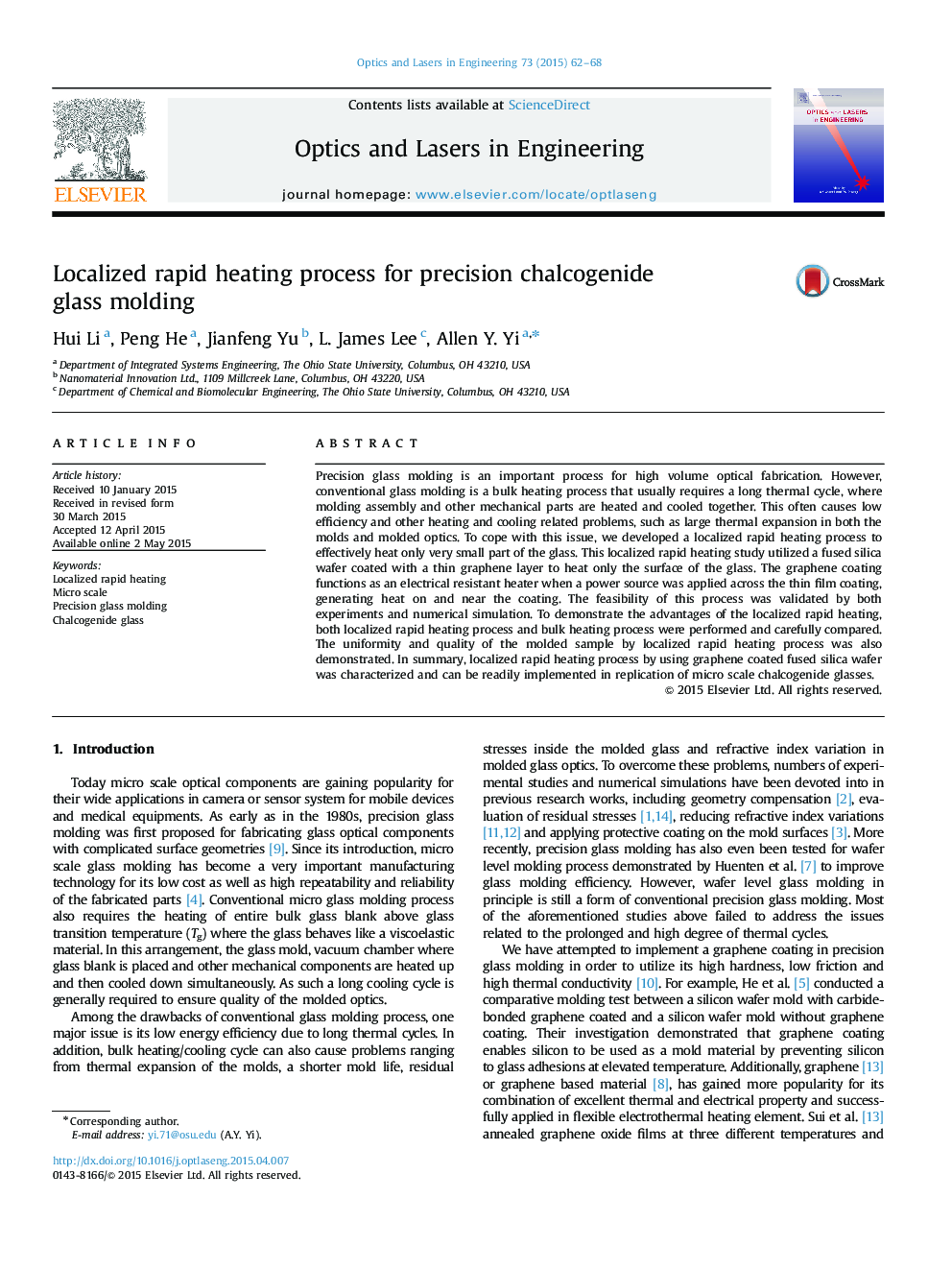| Article ID | Journal | Published Year | Pages | File Type |
|---|---|---|---|---|
| 735154 | Optics and Lasers in Engineering | 2015 | 7 Pages |
highlights•A fused silica wafer coated with a thin graphene layer was utilized for localized rapid heating only the surface of the glass.•The graphene coating functions as an electrical resistant heater when a power source was applied across the thin film coating, generating high temperature on and near the coating.•This process is fast and efficient since only interested areas are heated without affecting the entire glass substrate or the mold assembly.•The uniformity and quality of the molded sample by localized rapid heating process was demonstrated by comparing both localized rapid heating process and conventional bulk heating process.
Precision glass molding is an important process for high volume optical fabrication. However, conventional glass molding is a bulk heating process that usually requires a long thermal cycle, where molding assembly and other mechanical parts are heated and cooled together. This often causes low efficiency and other heating and cooling related problems, such as large thermal expansion in both the molds and molded optics. To cope with this issue, we developed a localized rapid heating process to effectively heat only very small part of the glass. This localized rapid heating study utilized a fused silica wafer coated with a thin graphene layer to heat only the surface of the glass. The graphene coating functions as an electrical resistant heater when a power source was applied across the thin film coating, generating heat on and near the coating. The feasibility of this process was validated by both experiments and numerical simulation. To demonstrate the advantages of the localized rapid heating, both localized rapid heating process and bulk heating process were performed and carefully compared. The uniformity and quality of the molded sample by localized rapid heating process was also demonstrated. In summary, localized rapid heating process by using graphene coated fused silica wafer was characterized and can be readily implemented in replication of micro scale chalcogenide glasses.
